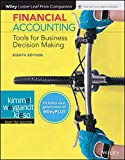
(a)
Net income: The bottom line of income statement which is the result of excess of earnings from operations (revenues) over the costs incurred for earning revenues (expenses) is referred to as net income. Net income is calculated as shown below:
Earnings per share (EPS): The amount of net income available to each shareholder per common share outstanding is referred to as earnings per share (EPS).
Use the following formula to compute EPS:
Debt to assets ratio: This financial ratio evaluates the ability of a company to pay off long-term debt obligations owed to creditors. This ratio assesses the solvency of a company.
Formula of debt to assets ratio:
Formula of free cash flow:
To compute: (a) Net income, EPS, and comment on the profitability.
(a)
Explanation of Solution
Compute net income (loss) of Company L for 2017.
Compute net income (loss) of Company B for 2017.
Compute EPS of Company L for 2017, if net income is $248,000 (From Equation (1)), preferred dividends are $0, and weighted common shares outstanding are 80,000 shares.
Compute EPS of Company B for 2017, if net income is $142,200 (From Equation (2)), preferred dividends are $0, and weighted common shares outstanding are 50,000 shares.
Comments: Net income of Company L is $248,000 and EPS is $3.1. Net income of Company B is $142,200 and EPS is $2.84. Based on net income, it can be inferred that the profitability of the Company L is more than Company B. The size of the company with respect to number of shares differs for each company. Hence, EPS of Company L cannot be compared to Company B.
(b)
Formula of working capital:
Formula of current ratio:
To compute: (b) Working capital, current ratio, and comment on the liquidity.
(b)
Explanation of Solution
Compute working capital of Company L, if current assets is $407,200 and current liabilities is $66,325.
Compute working capital of Company B, if current assets is $190,336 and current liabilities is $33,716.
Compute current ratio of Company L, if current assets is $407,200 and current liabilities is $66,325.
Compute current ratio of Company B, if current assets is $190,336 and current liabilities is $33,716.
Comments: Working capital of Company L is $340,875 and current ratio is 6.14:1. Working capital of Company L is $156,620 and current ratio is 5.65:1. Based on these two ratios, it can be inferred that the Company L is more liquid than Company B.
(c)
Debt to assets ratio: This financial ratio evaluates the ability of a company to pay off long-term debt obligations owed to creditors. This ratio assesses the solvency of a company.
Formula of debt to assets ratio:
Free
Formula of free cash flow:
To compute: (c) Debt to assets ratio, Free cash flow and comment on the solvency of Company L and Company B
(c)
Explanation of Solution
Compute debt to assets ratio of Company L.
Compute debt to assets ratio of Company B.
Compute free cash flow of Company L, if net cash provided by operating activities is $138,000, capital expenditures are $90,000, and dividends paid are $36,000.
Compute free cash flow of Company B, if net cash provided by operating activities is $36,000, capital expenditures are $20,000, and dividends paid are $15,000.
Comments: Debt to assets ratio of Company L is 18.6% and free cash flow is $12,000. Debt to assets ratio of Company L is 22.5% and free cash flow is $1,000. Based on these two ratios, it can be inferred that the Company L is more solvent than Company B.
Want to see more full solutions like this?
Chapter 2 Solutions
Financial Accounting: Tools for Business Decision Making, 8e WileyPLUS (next generation) + Loose-leaf
- Lennox Designs sold office machinery for $15,500. Lennox originally purchased the machinery for $60,000, and depreciation through the date of sale totaled $49,000. What was the gain or loss on the sale of the machinery?arrow_forwardAnsarrow_forwardWhat is the Return on Equity on these accounting question?arrow_forward
 Financial AccountingAccountingISBN:9781305088436Author:Carl Warren, Jim Reeve, Jonathan DuchacPublisher:Cengage Learning
Financial AccountingAccountingISBN:9781305088436Author:Carl Warren, Jim Reeve, Jonathan DuchacPublisher:Cengage Learning Financial Accounting: The Impact on Decision Make...AccountingISBN:9781305654174Author:Gary A. Porter, Curtis L. NortonPublisher:Cengage Learning
Financial Accounting: The Impact on Decision Make...AccountingISBN:9781305654174Author:Gary A. Porter, Curtis L. NortonPublisher:Cengage Learning Cornerstones of Financial AccountingAccountingISBN:9781337690881Author:Jay Rich, Jeff JonesPublisher:Cengage Learning
Cornerstones of Financial AccountingAccountingISBN:9781337690881Author:Jay Rich, Jeff JonesPublisher:Cengage Learning Financial AccountingAccountingISBN:9781337272124Author:Carl Warren, James M. Reeve, Jonathan DuchacPublisher:Cengage LearningPrinciples of Accounting Volume 1AccountingISBN:9781947172685Author:OpenStaxPublisher:OpenStax College
Financial AccountingAccountingISBN:9781337272124Author:Carl Warren, James M. Reeve, Jonathan DuchacPublisher:Cengage LearningPrinciples of Accounting Volume 1AccountingISBN:9781947172685Author:OpenStaxPublisher:OpenStax College





